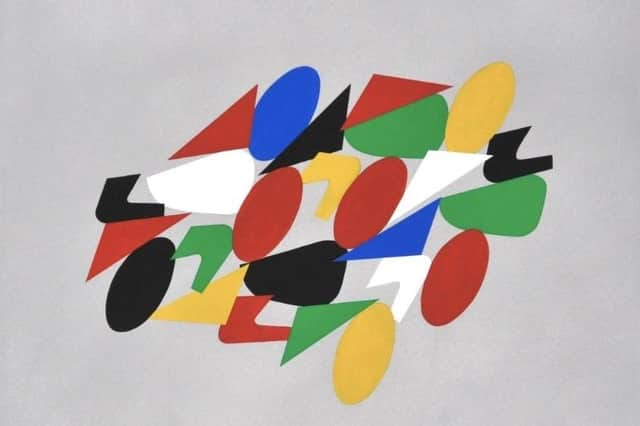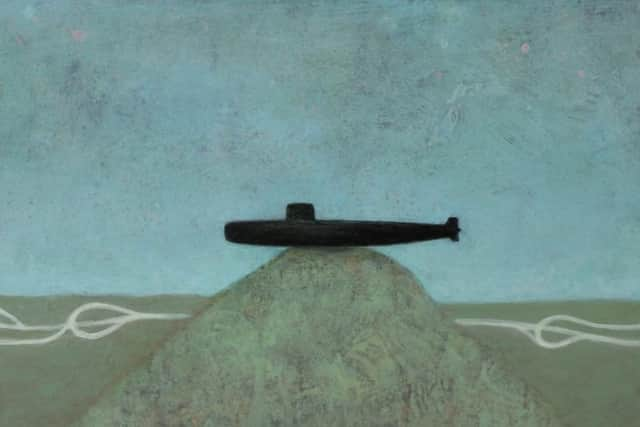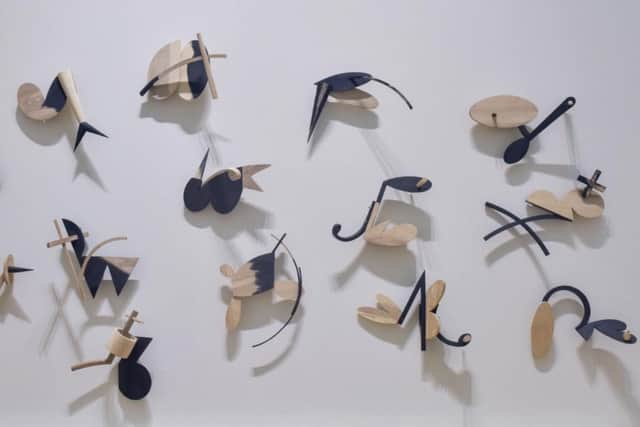Art review: RSA 196th Annual Exhibition, Royal Scottish Academy, Edinburgh


RSA 196th Annual Exhibition, Royal Scottish Academy, Edinburgh ****
The RSA is four years short of its bicentenary. In all that time, until two years ago the rhythm of its annual exhibitions never missed a beat. Then the pandemic struck and for two years the annual show could not take place. Last year, too, all the work was actually collected and the hang in progress when lockdown hit. Everything had to be abandoned and the show put online. Now, at last, the 196th annual exhibition is a real physical show and indeed, as though to make up for lost time, they have managed to include just short of 400 works. More than that, however, if any good could come to the arts from lockdown, it is that the galleries generally have discovered the online world. They had no choice, but as a result have greatly expanded their public. This year’s convenor of the annual exhibition is Robbie Bushe RSA, and consciously capitalising on this shift he and his team have not only put the whole physical show online, they have also added all the work that was selected but could not be hung because there wasn’t space, along with additional works by invited artists. The physical and online shows together bring the total exhibition to around 600 works.
Advertisement
Hide AdLong ago, the RSA regularly included that sort of number, but it did so by hanging work frame to frame and dado to ceiling. “Skyed” was the word disgruntled academicians used to complain about being hung at the top of such an arrangement, and here too in the upper rooms a wall has been hung, not quite frame to frame or floor to ceiling, but in blocks four deep and going way above the usual sight-line. It is hard to see the work at the top and in some cases too the labels are illegible eight feet above the floor, but also, while the rest of the galleries are painted in neutral colours, these massed hangs are against vividly coloured walls in pink, orange, or bright green. All this certainly breaks up the monotony, but not to the advantage of the art. The green grass in Helen Flockhart’s lovely moonlit painting Weep Not My Sister, for instance, doesn’t benefit much from being hung against a green wall and at the top of a massed arrangement of a dozen pictures. Others have suffered similarly.


Nevertheless, as they are visible online, the invisible artists do have an advantage over their disgruntled predecessors in former days and altogether there is certainly much to admire. The work on the cover of the printed catalogue, for instance, is Sun Visor by Jim Lambie. A sunburst in brilliant colour, it is in his signature style although its geometric regularity is interrupted by a dribble of red and a startled tern that has stayed into the composition. Toby Paterson matches Lambie’s brilliant colour in a smaller but really vivid work called Peloton Leaf. A composition of simple shapes and colours on aluminium, Paterson has taken the familiar language of constructivist abstraction to do something new and original and, with a distant echo of the Futurist Boccioni, capture the dynamism of the cyclists. Jake Harvey does something similar in a beautiful drawing composed of intersecting arcs of black and white, each like a single hand movement. Mary Bourne’s A Night and a Day, a sculpture in black slate, grey granite and white quartz, is equally simple and even more austere. In the same abstract vein, Ashley Collin’s Untitled-(Blocks) and Rachel Duckhouse’s Sea Mirror are both nice riffs on Bridget Riley. Hetty Haworth’s big screenprint, Ice Formations, is a bold and very satisfying composition in a less formal abstract language.
Ross Sinclair’s The Real Life Declaration of Arbroath 1320-2720 is composed of three massive banners proposing that we are half-way to some kind of fulfilment of the Declaration’s original promise. On a similar scale and inspired by more recent events, past president Arthur Watson has collaborated with poet Robert Crawford in a massed display of 20 framed, punning statements reflecting wryly on the pandemic: “2020 Vision’, “On Furlough – Inferno’, or ‘Weep, Zoom and Carry on.” A different take on the same theme is offered by Helle Crawford. Her After the Vaccination is a touching set of 12 small bronze figures, mostly seated and all socially distanced, waiting out their regulation ten minutes after the jab. Keith McIntyre’s Zoom, a haunting mass of looming/Zooming faces is another comment on the times.
Reflecting wider anxieties, Elspeth Lamb’s Meltdown is a landscape of melting ice-sheets rendered in mixed media but deploying patterns of printed woodgrain to beautiful effect. Philip Braham’s First light, Torlum Hill and two other brooding landscapes evoke the classical poetry of melancholy rather than any more immediate anxieties. Jennifer McRae has painted a touching self-portrait with her great-granddaughter. Doug Cocker’s Entomolgy is, aptly enough, a wall of fantastic insect shapes all made of cut and curving ash wood. Robbie Bushe surpasses himself in a wide landscape teeming with activity much in the manner of Brueghel, while working in the south of France has clearly made Leon Morrocco think of Cézanne in two large, beautifully composed pictures.
Among a dozen invited artists, Debbie Lee’s Let Loose in the Galleries shows children running amok in a gallery with pictures, apparently of themselves, on the walls. Michael Johnson has done an impressive drawing of a holly tree on 64 sheets of paper, and Mike Pratt has celebrated the rare flowering of the evil smelling corpse flower in a very fine large painting called Love Salad.


There is a sense of the quirky and also the surreal in Molly Lambourn’s charming, illustrated tea set, in Michael Agnew’s colossal owl, Mammy as an Aberdeen Owl (Actual Size), and in Stephen Shrynka’s All they let us eat was the plates, with a knife and fork neatly cut out of a ceramic plate. Perhaps referring again to the hazards of last year, Gordon Mitchell’s Twenty One shows a man on a beach threatened by an enormous dice falling out of a clear blue sky.
Advertisement
Hide AdThere is a some very good sculpture. Michael Snowden’s terra cotta Reliefs, a four-sided column with a figure in relief on each side, has a real classical feel to it. So too do Kenny Hunter’s two beautiful Models for a Monument. One of a horse and rider is in bronze, the figures framed by the risers, the tubes used in the casting. The other model is a crouching lion in plaster. Hunter’s work has a clarity and authority which echoes the neo-classical but doesn’t depend on it. The same can be said of Adrian Wiszniewski’s Maid of the Loch, a big painting that belongs in the grand tradition of figure painting but manages too to be boldly original. There are films and a reel of several that runs for more than an hour. There is of course a great deal more, too, and I have only looked here at work in the physical show. There’s lots more online. There are also obituaries and small memorial shows for two academicians, Elizabeth Blackadder and Iain McIntosh, who both died in 2021.
Until 12 June, see https://www.rsaannualexhibition.org/